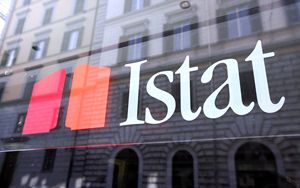(Finance) – In 2022 l‘86.4% of the Regions and 70.4% of the Municipalities it allows to carry out the entire process online, from start to finish, of at least one local public service. This was revealed by an Istat report which shows that the use of cloud computing services by local PAs is increasing sharply, from 34.3% in 2018 to 54.2%. Seven out of ten local administrations do not have a codified management of ICT security events.
74.0% of local PAs access the Internet via fast connections (at least 30 Mbps, Megabits per second), while the diffusion of ultra-fast ones (at least 100 Mbps) doubles (35.8%) compared to 2018 (17.4%). ). 5.1% of local PAs (81.8% of Regions) have invested in artificial intelligence or big data analysis or it planned to do so in the three-year period 2022-2024.
In detail: in 2022, almost all local public administrations (99.7%) use desktop PCs and 76.7% also use laptop PCs (63.4% in 2018). In general, there is a greater diffusion of laptops and videoconferencing tools following the new organization of work (for example smart working), started in the pandemic phase. In 2022, 22 out of 100 employees have access to a laptop, compared to 8 out of 100 in 2018.
An independent IT office is present in 95.5% of the Regions and in 93.6% of the Provinces, while just 21.0% of the Municipalities have one (14.9% in 2018). 8.1% of the Municipalities have established one under associated management, in particular in Emilia-Romagna (77.0%).
The share of local PAs in which staff have participated in ICT training activities is increasing (going from 16.9% in 2018 to 23.9% in 2022). At the same time, a greater share of employees is observed who have followed ICT training courses (23.5% in 2022 and 9.5% in 2018).
Increase in ICT training for staff – In the Municipalities the incidence of ICT training is linked to the demographic size class: from 17.3% of those with up to 5 thousand inhabitants (11.5% in 2018) to 57.6% of the Municipalities with over 60 thousand inhabitants (it was 46.4% in 2018). The presence of significant structural gaps is also found at a territorial level: from 38.4% of the municipalities in the North-East that have organized IT training courses to 16.7% of those in the South.
On average, the number of training hours provided by local PAs for every 100 employees stands at 59.0 (23.3 in 2018) with a notable difference between municipalities of different sizes (105.7 hours for those with over 60 thousand inhabitants versus the average of 61.4 hours recorded for all municipalities). The main topics on which training was carried out in local PAs were specific applications and software (71.4%), ICT security (49.4%), and web topics (42.2%).
